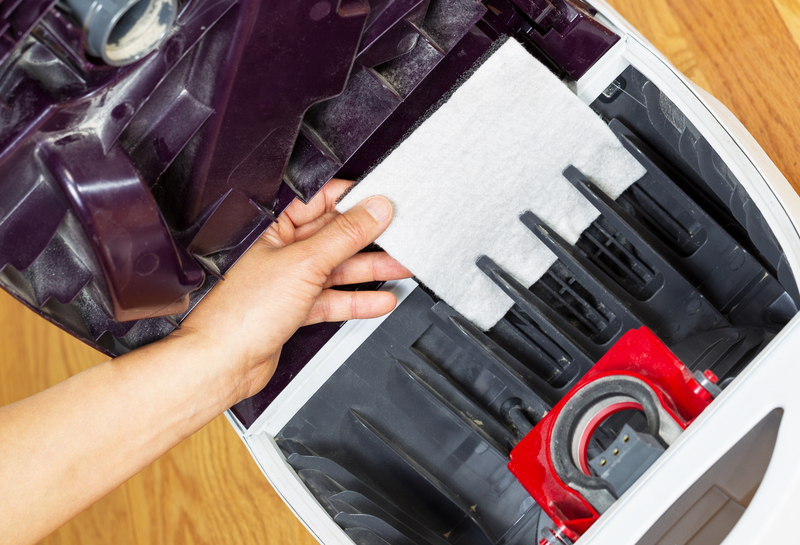Mastering Curtain Cleaning Techniques: A Handy Guide
Posted on 26/05/2025
Mastering Curtain Cleaning Techniques: A Handy Guide
Whether you're an avid home enthusiast or a casual cleaner, keeping your curtains fresh and spotless can dramatically improve the ambiance and hygiene of your living space. Curtain cleaning techniques are essential knowledge for any household, and mastering them not only preserves the fabric but also extends your curtains' lifespan. This comprehensive and SEO-optimized guide provides you with everything you need to know to effectively tackle this important cleaning task and ensure your window treatments always look their best.
Why Proper Curtain Cleaning Matters
Curtains are often forgotten when it comes to routine cleaning, but they harbor dust, allergens, and odors, impacting both air quality and your home's aesthetic. Here's why curtain cleaning should be a priority:
- Allergy Control: Curtains absorb airborne particles, dust mites, and pet hair, which can trigger allergies.
- Prolonged Lifespan: Regular cleaning prevents deterioration and fading, keeping your curtains looking new for longer.
- Improved Indoor Air Quality: Clean curtains reduce the spread of allergens and contaminants inside your home.
- Enhanced Appearance: Fresh curtains uplift your interiors, making rooms feel brighter, cleaner, and more welcoming.

Understanding Different Curtain Fabrics
Not all curtains are created equal. The proper curtain cleaning technique depends on the fabric type. Missteps can lead to fabric shrinkage, fading, or permanent damage. Let's examine the most common varieties:
- Cotton and Linen: Durable, but can shrink if not laundered properly. Generally safe for machine washing.
- Silk and Velvet: Luxurious, but sensitive to water and agitation. Typically require dry cleaning.
- Polyester: Resistant and easy to clean, usually machine washable.
- Sheer and Lace: Delicate; hand washing or gentle cycles are best.
- Thermal and Blackout Curtains: Often feature coatings that can deteriorate with improper washing--always check care labels.
Preparation: Before You Start Cleaning
To master curtain cleaning techniques, preparation is vital. Follow these preparatory steps:
- Read Care Labels: Always check the manufacturer's care instructions for fabric-specific advice and cleaning restrictions.
- Remove Hardware: Detach hooks, rings, and rods to prevent snagging and allow thorough cleaning.
- Shake Off Dust: Take curtains down and shake them outside to remove surface dust before deep cleaning.
- Test for Colorfastness: Dab a hidden corner with a wet cloth to see if dye bleeds.
Top Curtain Cleaning Techniques
1. Machine Washing Curtains
For many contemporary curtains, especially cotton, linen, or polyester, machine washing is a practical solution. Here's how to do it safely:
- Check Labels: Confirm that your curtains are machine washable.
- Use Cold Water: Prevent shrinkage and fading by using cold water and a gentle cycle.
- Select Mild Detergent: Harsh chemicals can damage fabrics and fade colors.
- Avoid Overloading: Wash curtains on their own, or with similar items to prevent tangling and uneven washing.
Pro Tip: For curtains with heavy stains or odors, presoak for 15-30 minutes in cool water mixed with mild detergent.
2. Hand Washing Curtains for Delicate Fabrics
Sensitive materials such as silk, sheer, lace, and some blends benefit from gentle hand washing. Follow these steps for safe and effective results:
- Fill a Tub: Use a basin or bathtub with lukewarm water and a small amount of mild detergent.
- Soak and Swirl: Gently move the curtains with your hands, avoiding twisting or scrubbing.
- Rinse Thoroughly: Drain the soapy water and refill with clean water until all detergent is removed.
- Squeeze, Don't Wring: Press the curtains gently to extract water; wringing can cause stretching and damage.
3. Steam Cleaning Curtains
A popular curtain cleaning method for large or immovable window treatments is steam cleaning. This is especially effective for removing dust, bacteria, and allergens from thick drapes:
- Leave Curtains Hanging: No need to uninstall--just close the curtains and ensure they're fully extended.
- Use a Handheld Steamer: Begin at the top and work downward, keeping the steamer a few inches from fabric.
- Focus on Stains: For stubborn spots, hover the steamer over stains for additional time (without soaking the fabric).
Note: Some fabrics--especially velvet and silk--may not tolerate steam; always consult care instructions.
4. Dry Cleaning Curtains
For certain materials such as silk, velvet, or lined and thermal-backed curtains, professional dry cleaning is the safest approach. Why?
- Preserves Fabric: No water or agitation--ideal for preventing shrinkage, fading, or distortion.
- Promotes Deep Cleaning: Removes oil-based stains and stubborn marks that water-based cleaning can't tackle.
Always identify nearby cleaners with experience in curtain care, and inform them of any special requirements.
5. Spot Cleaning Curtains
Sometimes, only a quick touch-up is needed. Spot cleaning is ideal for treating single stains or spills:
- Blot, Don't Rub: Use a soft cloth dampened with mild soap and water. Gently dab the stain until it lifts.
- Use Appropriate Solutions: For challenging spots, a mix of vinegar and water or a gentle upholstery cleaner can work wonders.
- Rinse and Dry: Pat with a clean, wet cloth to remove residue, then air-dry thoroughly.
Drying and Rehanging Curtains
How curtains are dried plays a significant role in continued care:
- Air Drying: Hang over a line or rod to air dry. Direct sunlight may fade colors, so opt for a shaded, well-ventilated area.
- Machine Drying: If the fabric allows, tumble dry on the lowest setting. Remove promptly to minimize wrinkles.
- Steam or Iron: To remove wrinkles, gently steam while hanging or iron on the appropriate setting as listed on your care label.
- Rehang While Slightly Damp: This technique lets gravity help pull out residual wrinkles for a smooth, elegant finish.
Maintaining Clean Curtains: Tips and Tricks
Routine Dusting and Vacuuming
- Weekly Maintenance: Use a microfiber cloth or vacuum with an upholstery attachment to remove dust and debris.
- Pay Close Attention: Focus on pleats, hems, and corners where dust collects.
- Reduce Odors: Lightly spritz with fabric freshener or use baking soda to absorb smells between washes.
Managing Allergens and Removable Stains
- Frequent Washes: If household members have allergies, increase cleaning frequency for maximum air purity.
- Immediate Action: Address spills and stains right away for easier removal and to prevent permanent marks.
Common Mistakes to Avoid When Cleaning Curtains
- Ignoring Labels: Always refer to the curtain's care label; skipping this could ruin expensive fabrics.
- Overusing Detergent: Excess soap can leave residue, attract dirt, and degrade fabric fibers.
- Prolonged Sun Drying: Extended exposure to sunlight can fade vibrant curtain colors.
- Wringing Delicate Fabrics: This can stretch and damage delicate materials--always press gently.
Eco-Friendly Curtain Cleaning Methods
With a focus on sustainability, there are eco-conscious ways to clean curtains while protecting both fabrics and the environment:
- Choose Natural Detergents: Opt for biodegradable, plant-based soaps.
- Spot Clean with Vinegar Solution: Mix equal parts white vinegar and water for a gentle, natural spot cleaner.
- Embrace Steam: Steam cleaning uses no chemicals and conserves water, making it a highly sustainable option.
- Air Dry Naturally: Skip the energy-hogging dryers by line drying indoors or outdoors (weather permitting).

Frequently Asked Questions: Curtain Cleaning Simplified
- How often should curtains be cleaned?
Ideally, deep clean your curtains every 6-12 months. Vacuum and dust weekly between washes for best results. - Is machine washing safe for blackout or thermal curtains?
Always check the label. Many blackout curtains contain coatings that may deteriorate in the wash; spot cleaning or professional cleaning is often recommended. - Can I use bleach on my curtains?
Avoid bleach unless the care label specifically allows it; bleach can weaken fibers and cause discoloration. - How do I freshen up curtains without washing?
Shake and air them outdoors, vacuum regularly, and use fabric sprays or baking soda for odor control.
Conclusion: Achieving Mastery with Curtain Cleaning Techniques
By understanding your curtain fabrics and choosing effective curtain cleaning methods, you can maintain a fresh, allergy-free home and extend the life and beauty of your window treatments. Routine cleaning, gentle handling, and proper drying techniques are the cornerstones of mastering curtain care. Your drapes are more than just decor--they're key to a healthy, stylish home environment. With this handy guide, you can confidently tackle curtain cleaning like a pro, ensuring sparkling, long-lasting results that elevate your space year-round.
Ready to Refresh Your Curtains?
- Gather your supplies and set a cleaning schedule today.
- Bookmark this guide for future reference as your go-to resource for all things curtain cleaning!
- Share with friends and family so everyone can enjoy spotless, stunning window coverings!
Master curtain care for a fresher, brighter home--happy cleaning!





